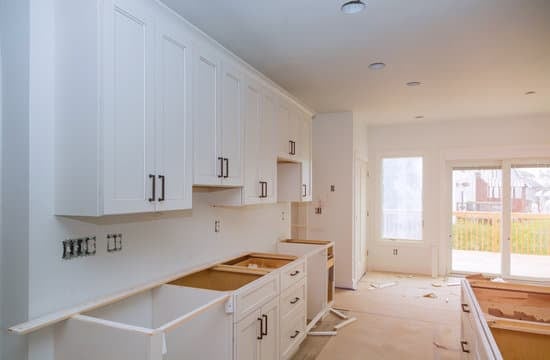Is your home Wi-Fi causing frustration with slow speeds, dropped connections, or dead zones? If so, it may be time to look into how to improve home Wi-Fi. Many factors can affect the performance of your Wi-Fi network, including the type of router you have, its placement in your home, and potential sources of interference. In this article, we will explore various strategies and solutions to enhance the reliability and speed of your home Wi-Fi.
The first step in improving your home Wi-Fi is to assess your current setup. This involves evaluating the type of router you have, understanding the strength of your Wi-Fi signal, identifying potential sources of interference, and determining any existing network congestion. By conducting a thorough assessment of your current Wi-Fi setup, you can pinpoint areas for improvement and make informed decisions on how to enhance your network’s performance.
Understanding the intricacies of Wi-Fi signal strength and interference is essential for optimizing your home network. Factors such as distance from the router, building materials, other electronic devices, and neighboring networks can all impact the quality of your Wi-Fi connection. By gaining insights into these variables, you can take proactive measures to minimize interference and maximize signal strength for better overall performance.
Understanding Wi-Fi Signal Strength and Interference
When it comes to improving your home Wi-Fi, understanding the factors that affect signal strength and cause interference is crucial. Here are some key points to consider:
1. Signal Strength: The strength of your Wi-Fi signal can be affected by various factors such as distance from the router, obstructions like walls or furniture, and electronic devices that emit interference.
2. Interference: Electronic devices like cordless phones, microwaves, and Bluetooth devices can interfere with your Wi-Fi signal, as well as neighboring Wi-Fi networks operating on the same channel.
To improve Wi-Fi signal strength and reduce interference, consider the following tips:
– Keep your router in a central location in your home to ensure even signal distribution.
– Minimize obstructions between your router and connected devices by avoiding placement near walls or large furniture.
– Select a Wi-Fi channel with less congestion to avoid interference from neighboring networks.
By understanding these key factors and making adjustments accordingly, you can significantly improve the overall performance of your home Wi-Fi network.
Choosing the Right Wi-Fi Router for Your Home
When it comes to improving your home Wi-Fi, one of the most crucial decisions you will make is choosing the right Wi-Fi router. With various options available in the market, it’s important to consider factors like the size of your home, number of connected devices, and internet usage habits.
One key factor to consider when choosing a Wi-Fi router is its wireless standard. The most common standards are 802.11n, 802.11ac, and the latest 802.11ax (Wi-Fi 6). The newer standards offer faster speeds and better performance, so it’s recommended to choose a router that supports at least 802.11ac for improved connectivity.
Another important consideration is whether you need a single band or dual-band router. Single-band routers operate on the 2.4GHz frequency and are suitable for smaller homes with fewer devices. On the other hand, dual-band routers offer both 2.4GHz and 5GHz bands, providing better performance for HD streaming and online gaming.
In addition to these technical aspects, it’s also essential to choose a reputable brand known for reliable and secure routers. Brands like Netgear, TP-Link, Asus, and Linksys have been recognized for their quality routers with advanced features such as beamforming technology for better signal coverage and parental controls for managing internet access. By considering these factors when choosing a Wi-Fi router, you can ensure an improved and seamless internet experience in your home.
| Wi-Fi Router Considerations | Recommendation |
|---|---|
| Wireless Standard | Choose at least 802.11ac for improved connectivity. |
| Bandwidth | Dual-band routers provide better performance for HD streaming and online gaming. |
| Brand | Consider reputable brands like Netgear, TP-Link, Asus, and Linksys known for reliable features. |
Proper Router Placement for Optimal Signal Coverage
For optimal Wi-Fi signal coverage in your home, the placement of your router is crucial. The signal strength and reliability of your Wi-Fi connection can be greatly affected by where you decide to position your router.
Avoid placing your router close to other electronic devices that may cause interference, such as cordless phones, baby monitors, or microwave ovens. Additionally, keeping your router away from sources of physical obstruction, such as walls and furniture, can help maximize signal coverage throughout your home.
Ideally, the best placement for your Wi-Fi router is in a central location within your home. This allows for more equal distribution of the Wi-Fi signal to all areas of the house. Keep in mind that elevating the router can also improve its signal coverage. Placing it on a high shelf or mount will help minimize obstacles and provide a clearer path for the signal to travel.
If you have a multi-story home, consider placing the router on the upper floor to facilitate better coverage throughout both levels. For those with large homes or properties, multiple routers or using a mesh network can provide improved overall coverage and eliminate dead zones.
Wi-Fi Range Extenders and Boosters
When choosing a Wi-Fi range extender or booster, it’s important to consider factors such as compatibility with your existing router, the technology used (dual-band, tri-band), and the range that the extender can cover. Additionally, some extenders come with additional features such as Ethernet ports for wired connections or mesh capabilities for seamless roaming between nodes.
One popular option for extending Wi-Fi coverage is through powerline adapters, which use existing electrical wiring in your home to transmit data signals. This can be a convenient solution in situations where traditional wireless extenders may not be effective due to distance or interference. Ultimately, investing in a quality Wi-Fi range extender or booster can significantly improve the performance and coverage of your home network.
| Wi-Fi Range Extenders | Boosters |
|---|---|
| Amplifies existing Wi-Fi signal | Increases coverage area |
| Eliminates dead zones | Provides stronger, more reliable connection |
| Consider compatibility with existing router | Look for additional features such as Ethernet ports or mesh capabilities |
Upgrading to a Mesh Network for Better Coverage
When you’ve exhausted all other options for improving the Wi-Fi coverage in your home, it may be time to consider upgrading to a mesh network. A mesh network uses multiple access points to provide strong, reliable Wi-Fi coverage throughout your entire home. Here are some key factors to consider when upgrading to a mesh network:
- Assess your current Wi-Fi coverage: Before investing in a mesh network, it’s essential to assess the current coverage and identify any areas with weak or inconsistent signal strength.
- Understanding mesh network technology: Mesh networks work by using multiple access points that communicate with each other to create a seamless and unified Wi-Fi network. This allows for better coverage and eliminates dead zones in your home.
- Choosing the right mesh system: There are various mesh systems available on the market, each with different features and capabilities. Consider factors such as the size of your home, the number of devices connected to your network, and any specific requirements you may have, such as support for smart home devices.
Upgrading to a mesh network can be a significant investment, but it can greatly improve the Wi-Fi experience in your home. With proper research and planning, you can find the right mesh system that meets your needs and provides reliable Wi-Fi coverage throughout your entire living space.
Managing Wi-Fi Network Congestion and Bandwidth Allocation
Identifying Network Congestion
Network congestion can occur when too many devices are trying to access the Wi-Fi network at the same time, resulting in slower internet speeds and poor connectivity. It’s important to be able to identify when network congestion is happening so that you can take steps to alleviate the problem.
Bandwidth Allocation and Quality of Service (QoS)
One way to manage network congestion is by prioritizing certain types of internet traffic over others. This can be achieved through the use of Quality of Service (QoS) settings on your router, which allows you to allocate more bandwidth to specific devices or types of traffic. For example, you may want to prioritize video streaming or online gaming over regular web browsing or software updates.
Implementing Traffic Shaping
Another method for managing network congestion is through a process called traffic shaping. This involves controlling the flow of data packets on your network in order to optimize performance and alleviate congestion. By giving priority to certain types of traffic, you can ensure a smoother and more efficient Wi-Fi experience for all devices connected to your network.
By understanding how to effectively manage Wi-Fi network congestion and allocate bandwidth, you can ensure that all devices connected to your network have a reliable and consistent internet connection, even during peak usage times. Additionally, implementing proper QoS settings and traffic shaping techniques can help improve overall performance and user experience on your home Wi-Fi network.
Securing Your Wi-Fi Network to Prevent Unauthorized Access
Setting a Strong Password
One of the first and most important steps in securing your Wi-Fi network is to set a strong password. Many routers come with a default password that is easy to guess, so it’s crucial to change this to something more secure. A strong password should be at least 12 characters long and include a mix of uppercase and lowercase letters, numbers, and special symbols.
Enabling Network Encryption
Another essential security measure is enabling network encryption. The most common types of encryption used for Wi-Fi networks are WEP, WPA, and WPA2. It’s important to avoid using WEP as it is relatively easy to crack. Instead, opt for WPA2, which provides a higher level of security. This encryption will prevent unauthorized users from intercepting data transmitted over your network.
Disabling SSID Broadcast
Another simple but effective way to secure your Wi-Fi network is by disabling SSID broadcast. When this feature is enabled, your network’s name (SSID) is visible to anyone within range, making it easier for hackers to identify and target your network. By disabling SSID broadcast, your network will not appear in the list of available Wi-Fi networks, adding an extra layer of security.
By implementing these measures and staying informed about the latest security best practices, you can significantly reduce the risk of unauthorized access to your home Wi-Fi network. Remember that securing your Wi-Fi is an ongoing process, and regular updates and enhancements to your security settings will help keep your network safe from potential threats.
Troubleshooting Common Wi-Fi Problems and Quick Fixes
In conclusion, improving your home Wi-Fi can greatly enhance your internet experience and make it more reliable for all your connected devices. By assessing your current setup, understanding signal strength and interference, choosing the right router, and placing it properly, you can already make significant improvements to your Wi-Fi network. Additionally, considering options such as range extenders, boosters, or upgrading to a mesh network can further expand coverage and eliminate dead zones in your home.
It’s also important to manage network congestion and allocate bandwidth effectively to ensure a smooth online experience for all users. Securing your Wi-Fi network is crucial in preventing unauthorized access and keeping your personal data safe. Finally, knowing how to troubleshoot common Wi-Fi problems and apply quick fixes can save you time and frustration when issues arise.
By implementing these tips and strategies for improving your home Wi-Fi, you can create a more efficient and reliable network that meets the demands of modern connectivity. With the increasing reliance on internet connectivity for work, education, entertainment, and communication, investing time in optimizing your Wi-Fi setup will undoubtedly be beneficial in the long run.
Frequently Asked Questions
How Can I Boost My WiFi Signal at Home?
Boosting your WiFi signal at home can be achieved by several methods. First, try repositioning your router to a central location in the house and away from obstructions.
You can also invest in a WiFi extender or a mesh network system to increase coverage. Updating your router’s firmware, using a different wireless channel, and minimizing interference from other electronic devices can also improve signal strength.
How Can I Make My Home WiFi Faster?
To make your home WiFi faster, start by checking for any background applications or devices that may be consuming bandwidth unnecessarily. Consider upgrading to a better internet plan with higher speeds and investing in a modern router with support for the latest WiFi standards.
Additionally, optimizing your router’s settings for performance and using wired connections whenever possible can help maximize speed.
How Can I Improve My WiFi Working From Home?
Improving your WiFi while working from home involves ensuring a stable connection for uninterrupted productivity. Positioning yourself closer to the router, reducing interference from other devices, and keeping the router updated are all important steps. In addition, you may want to consider investing in a dedicated work-from-home router or using a wired Ethernet connection for even greater reliability.

I’m thrilled to have you here as a part of the Remodeling Top community. This is where my journey as an architect and remodeling enthusiast intersects with your passion for transforming houses into dream homes.





